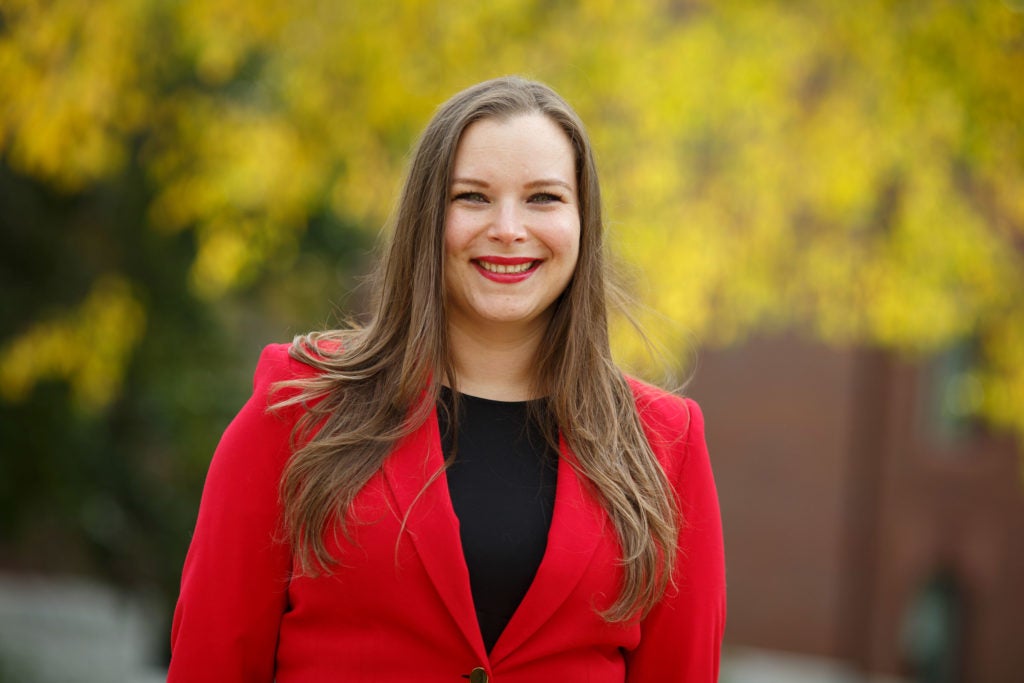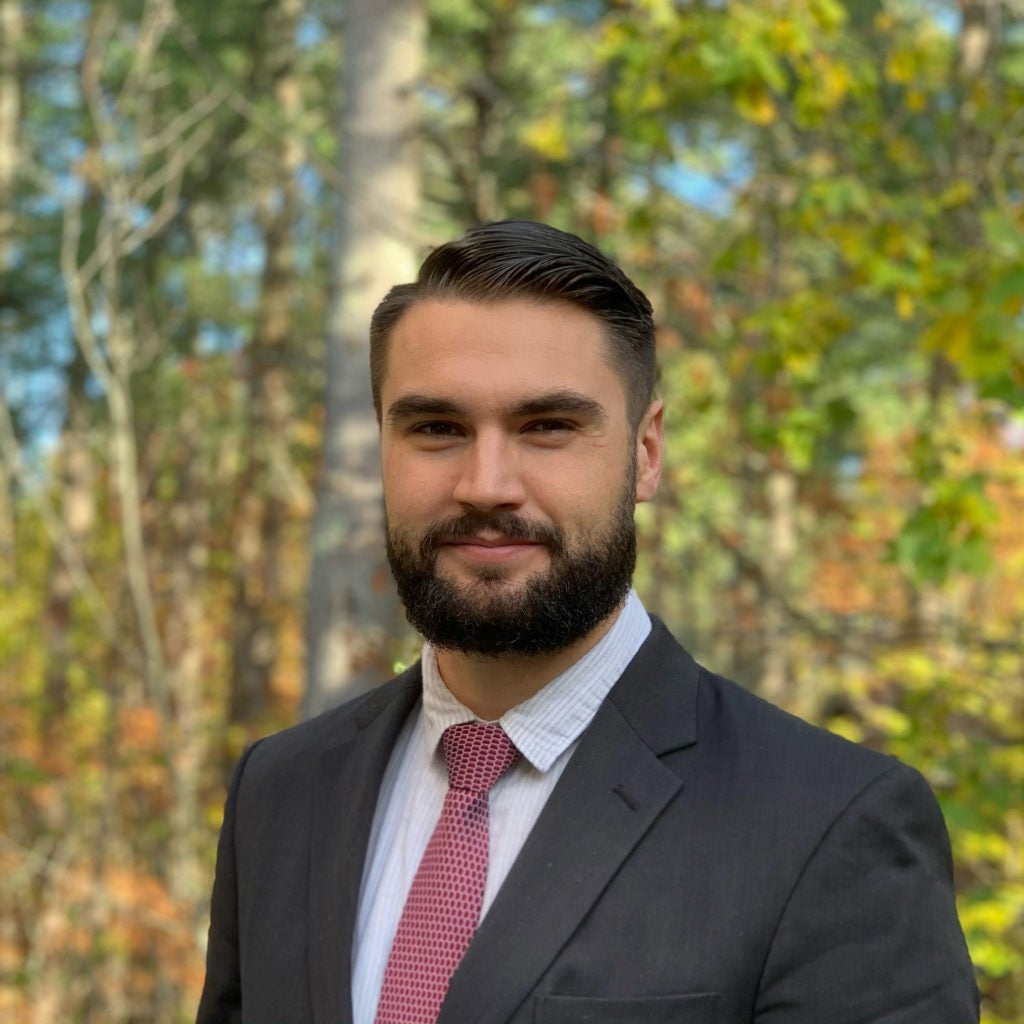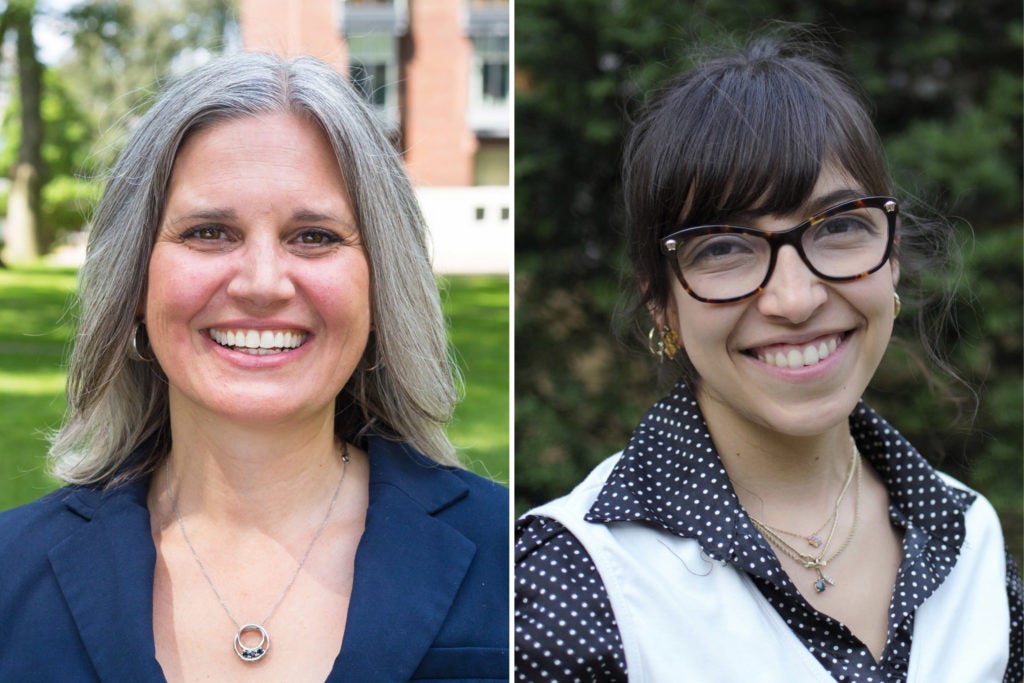In the real world, negotiating an agreement can be complex, multi-layered, and incredibly satisfying. That was the experience last fall, when students in the advanced course taught by Professor Rachel Viscomi ’01 and clinical instructor Sara del Nido Budish ’13 used insights from multiparty negotiation to analyze the potential passage of legislation aimed at helping people suffering from Amyotrophic Lateral Sclerosis (ALS) — and to better understand how to work as a team.
Advanced Negotiation: Multiparty Negotiation, Group Decision Making, and Teams, a highly interactive, workshop-style course, centers on a semester-long team project. The course, which Viscomi began teaching in 2015 and Budish joined in 2017, has been offered regularly since 2011 and engaging students far longer. Viscomi took a previous iteration in 1999.
Corey Linehan ’18 participated in 2017 as a teaching fellow. “I found it to be a valuable experience, thinking through how to solve really complex legal and interpersonal disputes early in their lifecycle,” recalled Linehan, who is currently the counsel for health and education for Senator Chris Coons (D-Del.). “It reinforced my own interest in playing a role in policy development and resolving really thorny questions.”

Last summer, Linehan and his former teachers reconnected, and Linehan shared that his office was working to promote a bill that Senator Coons had co-introduced, titled Accelerating Access to Critical Therapies for ALS, or ACT for ALS. Although the legislation already had support in Congress, there were some complications involved in getting it passed, and Budish and Viscomi saw an opportunity for a potential class project.
“One of the things that we always try to do is to incorporate a team project,” explained Viscomi. “Because the course is focused on multi-party negotiation, group decision-making, and teams, the benefit of a team project that is focused on negotiation is that it allows the student to incorporate all of the knowledge that they’ve been gaining over the course of our work together and apply it, not just in negotiation analysis that they’re doing — in this case, of this legislative process — but also in the work that they’re doing as a team and in the decisions that they’re making as a team.”
Breaking the class down into small groups, “we asked the students to provide strategic recommendations, based on what they were learning in class,” said Budish. “The students worked to come up with sets of moves that would help navigate this terrain.” The effort culminated in presentations, at which the class was joined by two members of the senator’s staff.

One of those students was Ivanka Canzius ’24 from Madrid. For her team, the process began with understanding the legislative process. “What are the criteria used by each different group? If there’s a subcommittee, what are the criteria they look for?”
While one of Canzius’s teammates researched individual committee members, identifying areas of interest and agreement, another focused on the relationships: “Who to place with whom,” she explained. “We created a power map and spreadsheets about outside interests, such as family members who had ALS.”
The experience was enlightening for William Locke ’23, who served on a different team. “Negotiation is a critical skill, no matter what area of the law you go into,” he said. “I want to go into litigation, but I saw over my summer job that even in litigation you’re negotiating all the time. You’re thinking about how you’re communicating, trying to get to the best outcome for parties, and being strategic.”
When we presented this to the staffers who had been working on the ACT for ALS and we started talking about veterans’ issues, we saw their eyes light up. We saw a real impact.
–William Locke ’23, who served in the Marines from 2016 to 2020
Locke’s team researched affinities between other initiatives from the senator’s office, looking for possible relevance. The second-year law student, who served in the Marines from 2016 until 2020, focused on areas that connected to veterans’ affairs. The Veterans of Foreign Wars and similar organizations tend to have “robust legislative tracking,” he pointed out. However, “at the time that did not include the ACT for ALS or anything to do with ALS, which disproportionately affects veterans.” (According to the ALS Association, military veterans are twice as likely to develop ALS as those who haven’t served in the military.)
Locke’s team found a connection: Senator Coons had been a co-sponsor (with Sen. Lisa Murkowski, R-Alaska) on the Justice for ALS Veterans Act in 2019, which would make it easier for surviving spouses to receive benefits. “When we presented this to the staffers who had been working on the ACT for ALS and we started talking about veterans’ issues, we saw their eyes light up,” said Locke. “We saw a real impact.”as

“It was helpful to hear fresh voices who had the ability to zoom out and look at the whole thing from a distance,” agreed Linehan, who attended the presentations. “It’s a perfect illustration of how sometimes an academic exercise can also have real-world value as well.”
It may also have had lasting impact. The bill passed and was signed into law on Dec. 23. However, the class instructors stress that happy outcome was not the class’s goal. In addition to teaching negotiation with external partners, the class — for which September McCarthy ’22 served as the teaching fellow — also seeks to educate about teamwork and group dynamics, an essential component for students going forward.
“One of the things that we hear all the time from employers is that teamwork is a place where law students can fall short,” said Viscomi. To address that lack, the course is designed to provide tools — a framework and context — but then to “pull back and let them self-navigate,” she said.
“The project is designed in two parts,” explained Viscomi. “The first piece is the teams sharing their substantive recommendations about what it is that we’ve asked them to study and to analyze and to make recommendations about that — in this case how to get the Act for ALS passed.”
“They have a second assignment as well,” Budish added, “which is, as a team, to reflect on how well they worked together as a team: where they got stuck and how they got unstuck. They’ve learned over the course to analyze team effectiveness.”

For example, one of the teams created an online form in which students could share anonymous feedback with one another on the group’s processes and dynamics after each team meeting. “We thought it was an innovative way for teams to build in reflection and low-risk sharing on how they were working together, in addition to moving forward on the substance of the project,” their teachers recalled.
The lessons in process had an impact. “It was readily apparent from the first day that each person negotiating brings a different lens to the negotiation,” said Canzius. “You find everybody’s interest and use all the elements.”
The focus of the negotiation only helped cement those lessons. “When you’re working in a team and you do a project that has some impact in real life, such as the passing of a bill, it builds a specific type of bond with the group, with the classroom, with the professors,” added Canzius.
The strength of their work shows that they can have real-world impact in a pretty meaningful way.
–Corey Linehan ’18
That’s a lesson Linehan understands well. “Students often approach some of the tools and frameworks that are taught in programs like this as nice in theory but have questions about how impactful they can be in the real world,” he concluded. “The strength of their work shows that they can have real-world impact in a pretty meaningful way.”
“It was really inspiring for the students to see that the concepts and the ideas that they are learning are being leveraged regularly,” said Viscomi. Added Budish, “This was an amazing experience not only because of the ultimate outcome, but also because of what students learned along the way about multiparty negotiation and teamwork.”
